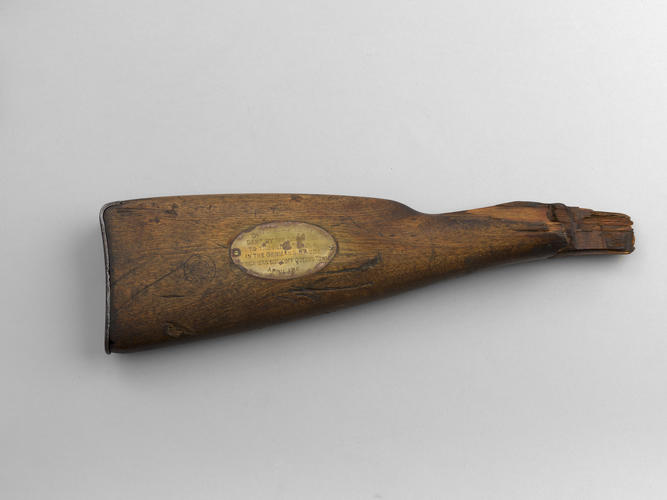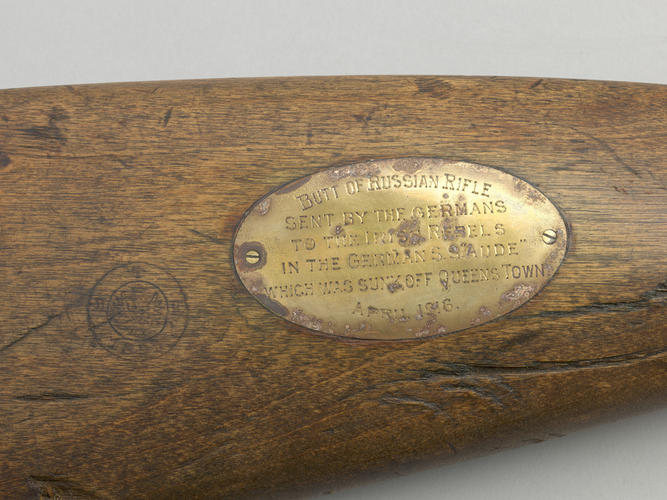-
1 of 253523 objects
Rifle butt c. 1916
Wood, brass, steel | 11.1 cm (Width); 38.8 cm (Length) (whole object) | RCIN 68999
-
Wooden rifle butt with an attached oval brass plaque. The butt has jagged edges where it has been broken from the rest of the stock.
During the First World War Ireland was a united country; however, there were religious and cultural tensions which the Germans realised they may be able to capitalise on to distract the British war effort.
This rifle was one of 20,000 captured Russian rifles sent by Germany to aid the Irish Republican Rising of 1916. It was intended that the rifles and other munitions be landed on the coast of County Kerry, from a vessel masquerading as a Norwegian steamer the Aud. However on the 22 April 1916 the Aud was intercepted by a British warship and scuttled by her crew while being escorted into Cork Harbour; the crew were interned for the rest of the war. The wreck was subsequently depth-charged, but not before Royal Navy divers had recovered some of its cargo - possibly including this rifle.
The SS Aud was built in Hull as the SS Castro, a cargo vessel. In August 1914 she was captured by the German Navy and renamed the SMS Libau, before later impersonating the SS Aud.
At the time of its presentation, Admiral Sir Frederick Tower Hamilton surmised it might have been taken from the Russians by the Japanese and returned to the Russians at the start of the First World War, then taken from Russia by the Germans and 'now taken from the Germans by us, a somewhat chequered career!'Provenance
Raised from wreck of SS Aud, sunk when gun-running during the 1916 Easter Rising. Acquired by Admiral Sir Frederick Tower Hamilton at the Admiralty and presented to the king by him c.29 June 1916. Formed part of King George V's War Museum at Windsor Castle, established to display his collection of First World War souvenirs; the King was assisted by the Royal Archivist & Librarian John Fortescue (1859-1933). Many of these objects were loaned to the Imperial War Museum in 1936 at the suggestion of King Edward VIII.
-
Creator(s)
(nationality)(nationality)Acquirer(s)
-
Medium and techniques
Wood, brass, steel
Measurements
11.1 cm (Width); 38.8 cm (Length) (whole object)
Category

